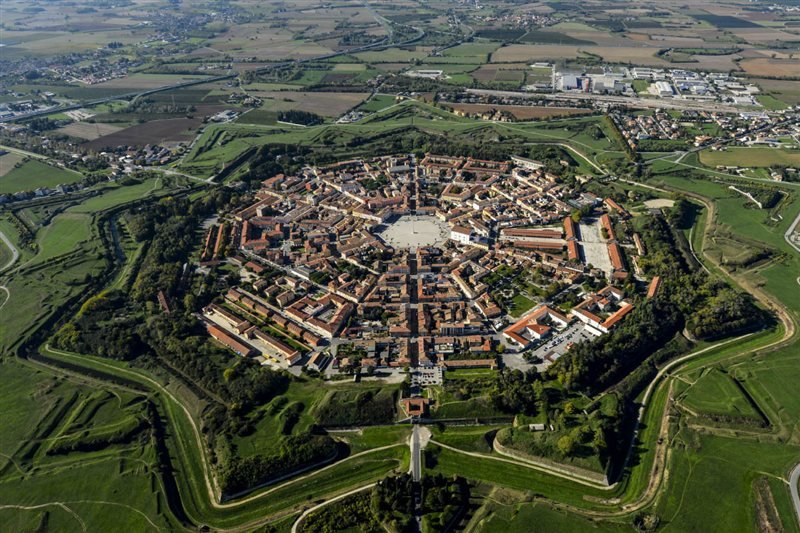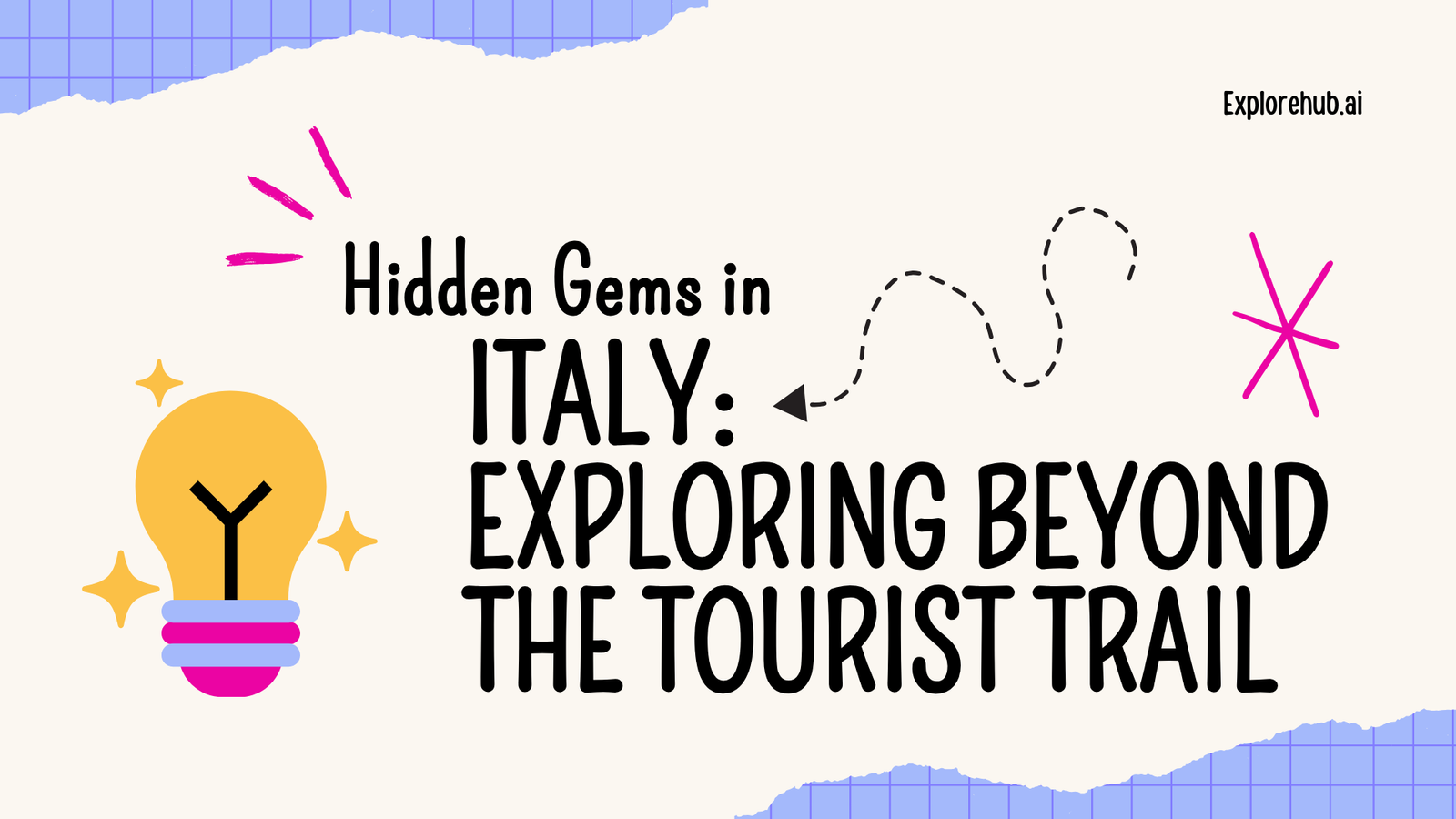Italy, with its world-renowned cities like Rome, Venice, and Florence, is a dream destination for many. However, while these cities offer breathtaking sights and rich histories, the true essence of Italy often lies in its hidden corners, away from the hustle and bustle of tourist crowds. Exploring these lesser-known destinations not only provides a more authentic Italian experience but also reveals the country’s diverse landscapes, cultures, and traditions. This article takes you on a journey through Italy’s hidden gems, offering a glimpse of places that are just as magical, yet often overlooked.
Table of Contents
Why Explore Italy’s Hidden Gems?
Visiting Italy’s hidden gems allows travelers to experience the country in a way that’s often missed by those sticking to the traditional tourist trail. By venturing off the beaten path, you can avoid the crowds, enjoy more intimate encounters with local culture, and discover landscapes and historical sites that are unique and less commercialized. Whether it’s a tranquil lake, a medieval town, or an ancient city carved into rock, these hidden gems offer a fresh perspective on what Italy has to offer.
Northern Italy’s Hidden Gems
Bergamo – The Overlooked Medieval Beauty

Bergamo, often overshadowed by nearby Milan, is a city steeped in history and charm. Its old town, known as Città Alta, is perched on a hilltop and surrounded by ancient Venetian walls. Here, you can wander through narrow cobblestone streets, admire the medieval architecture, and soak in the views from Piazza Vecchia, the heart of the old town. The Basilica of Santa Maria Maggiore, with its stunning frescoes and intricate tapestries, is a must-visit. Bergamo also offers a rich culinary scene, with local dishes like casoncelli (stuffed pasta) and polenta e osei (a traditional dessert) providing a true taste of the region.
Lake Orta – A Serene Retreat

Lake Orta, often described as one of Italy’s most beautiful lakes, is a hidden gem tucked away in the Piedmont region. Unlike its more famous neighbors, Lake Como and Lake Maggiore, Lake Orta offers a peaceful and unspoiled environment. The charming town of Orta San Giulio, with its narrow streets and colorful houses, is the perfect place to unwind. A short boat ride takes you to the island of San Giulio, home to a tranquil monastery and stunning views. For those who enjoy outdoor activities, Lake Orta offers opportunities for boating, hiking, and exploring local markets, where you can find handmade crafts and regional delicacies.
Friuli Venezia Giulia – Italy’s Best-Kept Secret

The area of Friuli Venezia Giulia, hidden in Italy’s northeast, provides a distinctive fusion of foods, landscapes, and cultures. The capital city, Trieste, with its grand squares and seafront promenade, reflects its Austro-Hungarian past. Just a short drive away, Cividale del Friuli, a UNESCO World Heritage site, offers a glimpse into Italy’s medieval history. The Collio wine region, known for its excellent white wines, is a paradise for wine lovers. Here, you can visit family-run vineyards, sample local wines, and enjoy the beautiful rolling hills that characterize the landscape.
Central Italy’s Hidden Gems
Urbino – The Renaissance City

Urbino, a small town in the Marche region, is a hidden gem that played a crucial role during the Renaissance. The town is home to the Palazzo Ducale, one of the most important Renaissance buildings in Italy. Inside, the National Gallery of the Marche houses an impressive collection of Renaissance art, including works by Raphael, who was born in Urbino. The town’s well-preserved medieval streets, vibrant cultural scene, and stunning views of the surrounding countryside make Urbino a must-visit for history and art lovers.
Pitigliano – The Little Jerusalem

Nestled in the hills of Tuscany, Pitigliano is a town with a fascinating history and unique architecture. Often referred to as “Little Jerusalem,” Pitigliano was home to a thriving Jewish community in the 16th century, and its ancient synagogue and Jewish Ghetto are well-preserved and open to visitors. The town itself is built on a tuff rock, with houses seemingly carved out of the stone, creating a dramatic and picturesque landscape. Visitors can explore the Orsini Fortress, wander through the town’s narrow streets, and enjoy local specialties like Sfratto, a traditional Jewish pastry.
The Sibillini Mountains – A Hiker’s Paradise

The Sibillini Mountains, located in the central Apennines, are a hidden treasure for nature lovers and adventure seekers. This mountain range offers some of the best hiking trails in Italy, with routes that take you through lush forests, alpine meadows, and past crystal-clear lakes. The area is also rich in folklore, with legends of witches and fairies said to inhabit the mountains. In spring, the plains of Castelluccio di Norcia are transformed into a vibrant carpet of wildflowers, creating a breathtaking spectacle that draws photographers and nature enthusiasts from around the world.
Southern Italy’s Hidden Gems
Matera – The Ancient City of Stone

Matera, located in the Basilicata region, is one of Italy’s oldest cities and a UNESCO World Heritage site. The city is famous for its Sassi, ancient cave dwellings carved into the rock, which were inhabited until the 1950s. Today, the Sassi have been transformed into unique homes, boutique hotels, and restaurants, offering visitors a chance to experience life in a city that dates back thousands of years. Matera’s rich history, stunning architecture, and vibrant cultural scene make it a must-visit destination in Southern Italy.
Calabria – Italy’s Untouched Coastline

Calabria, located at the southern tip of Italy, is home to some of the country’s most beautiful and unspoiled beaches. The town of Tropea, perched on a cliff overlooking the Tyrrhenian Sea, is famous for its stunning views, clear waters, and white sandy beaches. Scilla, another picturesque town, offers a perfect blend of history, culture, and natural beauty, with its ancient castle and charming fishing village. Calabria’s rugged coastline, with its hidden coves and crystal-clear waters, is a paradise for snorkeling, diving, and exploring.
Basilicata’s Ghost Towns

The region of Basilicata is home to several abandoned villages, known as ghost towns, that offer a fascinating glimpse into Italy’s past. Craco, perhaps the most famous of these towns, was abandoned in the 1960s due to landslides and has since become a popular location for filmmakers and photographers. The town’s eerie, crumbling buildings and narrow streets create a hauntingly beautiful landscape that is both captivating and mysterious. Other ghost towns, like Aliano, offer similar experiences, with their deserted streets and silent, empty houses.
Hidden Gems on Italy’s Islands
The Aeolian Islands – Volcanic Wonders

The Aeolian Islands, located off the northern coast of Sicily, are a group of volcanic islands that offer stunning natural beauty and a unique cultural experience. Lipari, the largest of the islands, is known for its picturesque old town and archaeological sites. Stromboli, with its active volcano, offers the chance to witness one of nature’s most spectacular displays of fire and lava. Salina, with its lush landscapes and famous Malvasia wine, is the perfect place to relax and enjoy the island’s tranquil atmosphere. Whether you’re hiking up a volcano, exploring ancient ruins, or sampling local delicacies, the Aeolian Islands offer a truly unforgettable experience.
Pantelleria – Sicily’s Hidden Island

Pantelleria, located between Sicily and Tunisia, is one of Italy’s most unique islands. Known for its rugged landscape, black volcanic rocks, and crystal-clear waters, Pantelleria is a paradise for nature lovers. The island is home to the Specchio di Venere, a stunning natural lake formed in a volcanic crater, where you can relax in warm, mineral-rich waters. The island’s unique architecture, with its traditional stone houses known as dammusi, and its lush gardens filled with olive trees and vineyards, add to its charm. Pantelleria is also famous for its wine, particularly the sweet Passito, which is made from sun-dried grapes.
Practical Tips for Exploring Italy’s Hidden Gems
When planning a trip to Italy’s hidden gems, timing and preparation are key. The best time to visit many of these destinations is during the shoulder seasons (spring and fall), when the weather is mild, and the crowds are fewer. Renting a car is often the best way to explore these remote areas, as public transportation can be limited. It’s also important to respect local customs and the environment, especially in smaller communities where traditions are deeply rooted. Take the time to learn a few basic Italian phrases, be mindful of dress codes in religious sites, and always dispose of trash properly.
Also visit:
The Best Beaches in Florida for Photographers
The Best Beaches in Florida for Bird Watching
The Best Beaches in Florida for Fishing Adventures
The Best Beaches in Florida for Nightlife and Entertainment
The Best Beaches in Florida for Beach Volleyball
Conclusion
Italy’s hidden gems offer a chance to experience the country in a way that goes beyond the typical tourist attractions. From medieval towns and serene lakes to ancient cities and untouched coastlines, these lesser-known destinations are rich in history, culture, and natural beauty. By venturing off the beaten path, you can discover a side of Italy that is more authentic, more intimate, and often more rewarding. So, pack your bags, grab a map, and get ready to explore the hidden treasures of Italy – you won’t be disappointed.




